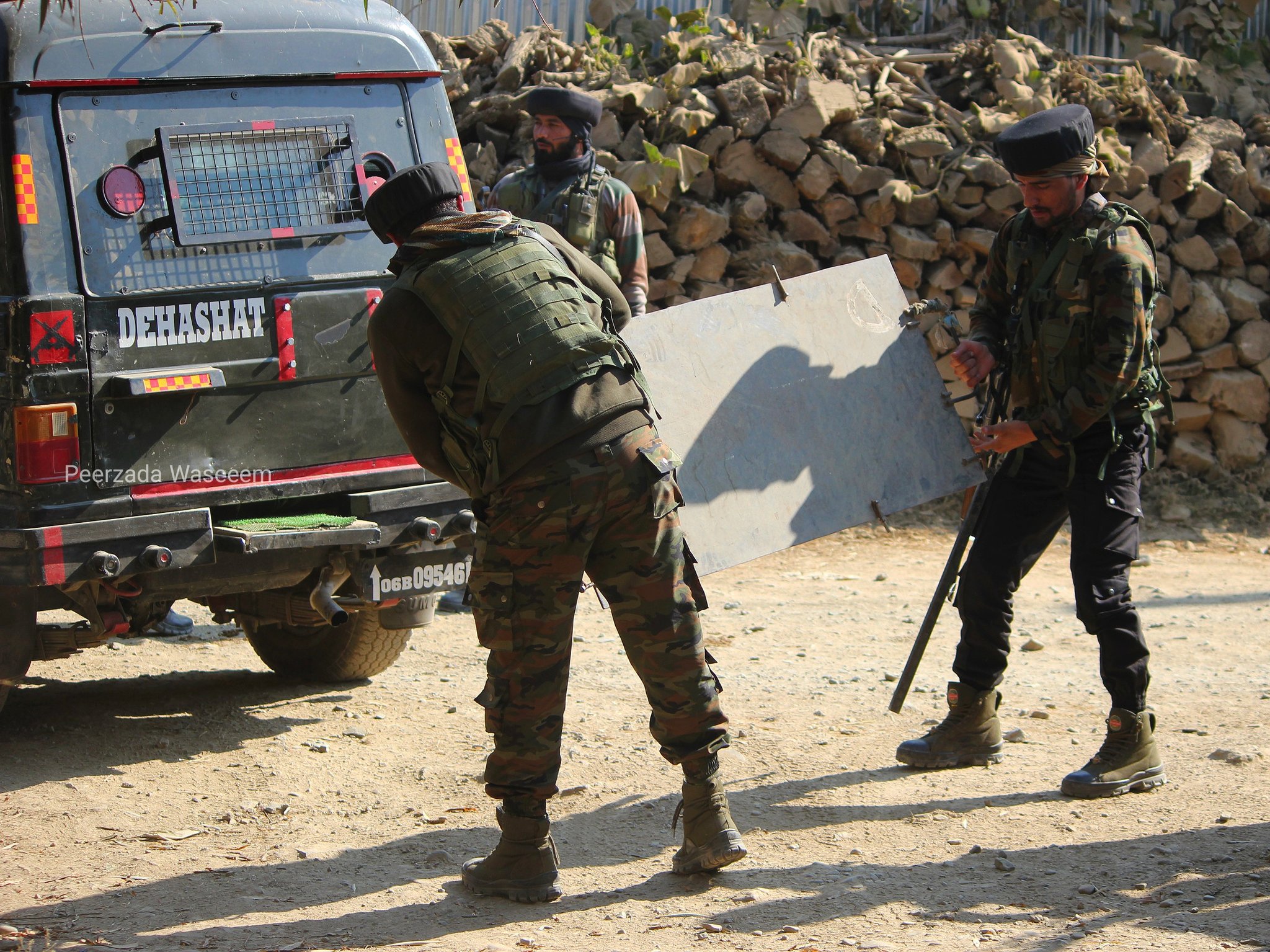Unknowncommando 2
New Member
- Joined
- Oct 2, 2016
- Messages
- 5,237
- Likes
- 26,147
53 RR (PUNJAB)
FAB MOD + EOTECH
*Correction - 22 RR (PUNJAB)FAB DEFENSE Mod
53 RR (PUNJAB)
View attachment 65081
ITL RAPTOR Mini Reflex Sight
View attachment 65080
BEL Holographic Sight

How does LORROS help when there is incoming mortar fire?In terms of modernisation of the army what is most often visible to the public eye are land warfare centric weapons. Primarily small arms, BPJs, helmets etc. Of late artillery. But thing is, the same priority has to be accorded to electronic and aerial systems to enable pervasive surveillance, data sharing, attack, etc. In light of the recent LoC shooting in which 4 Indian troops lost their lives, here is an alternate scenario:
1> Hawaldar or JCO rank soldier manning LORROS spots suspicious movement and positively IDs them as hostile infiltrators.
2> He rings up his Captain and both jointly view the LORROS feed. Hawaldar is given permission to call in a drone.
3> Hawaldar requests an armed UAV to come on station. Terrorist coordinates generated by LORROS are used for positioning UAV.
4> UAV on station can be either from IAF or Army depending on which service has duty for armed drone surveillance at that time.
5> LORROS feed is shared with Drone operator. Drone optronics feed is shared with Hawaldar. Hostiles are thus cross verified and target is made certain.
6> Drone operator takes control and fires an airburst Helina missile on the group of terrorists, toasting them all.
I wonder how close to this kind of a situation are we.
Good point. This assumes only one LORROS or only one observation post. Many times multiple observation posts can be made to focus on a common target. Your statement also assumes that all our LORROS posts are within range of Paki mortars. Furthermore, the observation posts need not necessarily be LORROS. You can have static poles with high mast mounted EO units on high mountains and well out of mortar range. You can also have handheld drones with 30min-1hr endurance that can be thrown quickly. Also recon MALE drones as well (preferably armed). Thing is that visual intel needs to be quickly processed and shared so that orders to strike (from a distance) should have a very short OODA loop and the strike is successful.How does LORROS help when there is incoming mortar fire?
Even if we assume LORROS has 20 km range, it needs line of sight to identify mortar positions, but mortar firing positions are more often than not are not in line of sight.Good point. This assumes only one LORROS or only one observation post. Many times multiple observation posts can be made to focus on a common target. Your statement also assumes that all our LORROS posts are within range of Paki mortars. Furthermore, the observation posts need not necessarily be LORROS. You can have static poles with high mast mounted EO units on high mountains and well out of mortar range. You can also have handheld drones with 30min-1hr endurance that can be thrown quickly. Also recon MALE drones as well (preferably armed). Thing is that visual intel needs to be quickly processed and shared so that orders to strike (from a distance) should have a very short OODA loop and the strike is successful.
Yes. For mortars WLRs and drones are options. Else cooked. From what I've heard clandestine observation posts are a common feature on the LoC.Even if we assume LORROS has 20 km range, it needs line of sight to identify mortar positions, but mortar firing positions are more often than not are not in line of sight.
Coming back to your original question, capability for all the elements mentioned in your scenario exist with IA inventory. how frequently the combination of all is used, that question can only be answered by IA veterans.
I’ll end it here, I even forgot why I asked that question in the first place.
Shiv Aroor & Rahul Singh's book - India's Most Fearless 1 & 2 is a great read to understand the prevalence of thermal imagers, clandestine observation posts etc.Yes. For mortars WLRs and drones are options. Else cooked. From what I've heard clandestine observation posts are a common feature on the LoC.
Mostly because assam rifles had received some mku helmets with in built commsAre they wearing Comms of some kind?
It appears to be dual ear ones... You can look at the headband like that of tactical headsets over the operator's head
| Thread starter | Similar threads | Forum | Replies | Date |
|---|---|---|---|---|
|
|
Indian Army Says Its New Artillery Chief "Spearheaded Artillery Modernisation". | Indian Army | 8 | |
|
|
Modernisation for Indian 105mm Light Field Guns. | Indian Army | 91 | |
|
|
Update On Indian Navy Force Modernisation | Indian Navy | 14 | |
|
|
How Indian Navy is expanding and modernising | Indian Navy | 0 |
